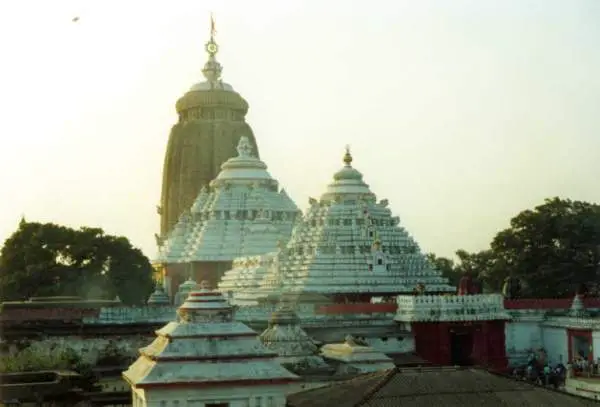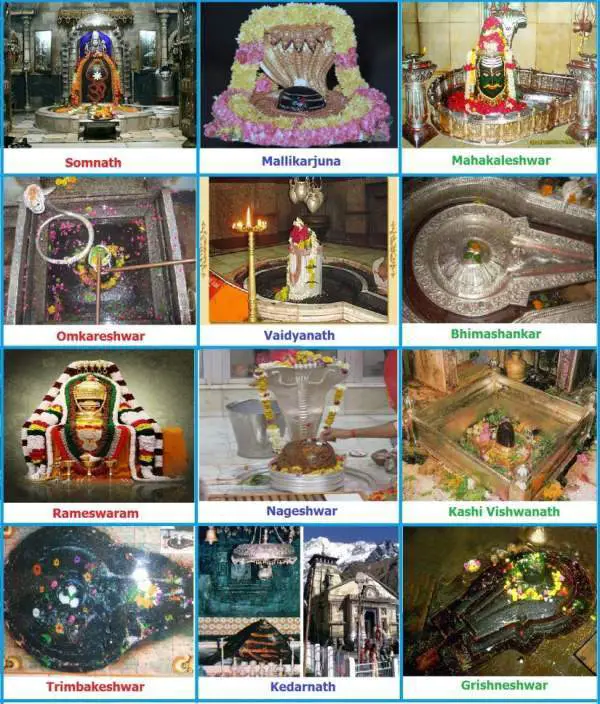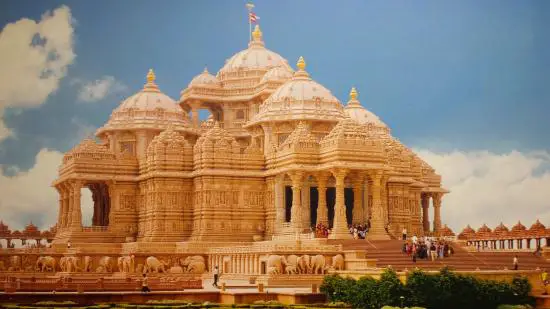The “Prathma Ganesha” in the Hindu religion is considered Trinetra (three-eyed) Ganesha of Ranthambore. The Ranthambore Ganesha Temple or Trinetra Ganesha Temple is in the state of Rajasthan. The temple is situated inside the fort of Ranthambore. This temple has the idols of the entire family of Shri Ganesha.
The Trinetra Ganesha Temple of Ranthambore is considered one of India’s oldest temples. It is built from red Karauli stone. This temple receives several marriage invitations and wish-fulfillment letters/messages because Bhagwan Ganesha is a powerful Hindu God of wisdom, fortune, and prosperity.
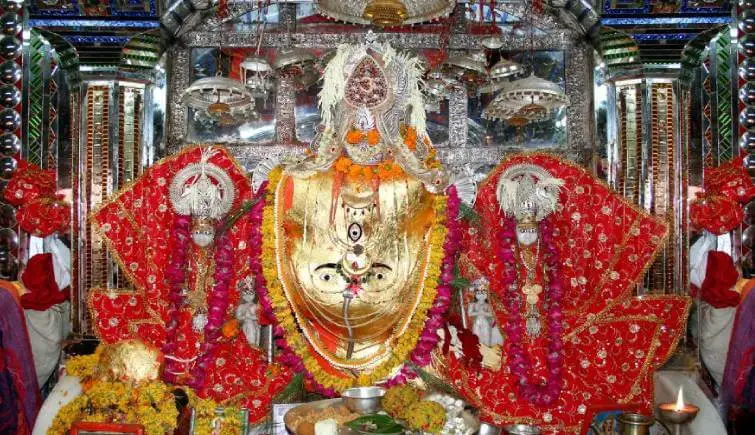
Ranthambore Ganesha Temple is one-of-a-kind because this Bhagwan Ganesha family is also represented. It is also a tourist attraction spot.
Table of Contents
History of Ranthambore Ganesha Temple
According to history, during1299 AD, it is said that there was a great battle between King Hameer and Alauddin Khilji at the fortification where the king lived. The war was intense and, according to history, lasted for many years.
During the war, kings used to store groceries and many other essential items for themselves and their people. But the war was so long that the stored goods were getting over.
This made King Hameer worried. The king was a great devotee of Bhagwan Ganesha, and one night, when the king was sleeping, he saw Bhagwan Ganesh in his dreams.
In his dream, God said that all his problems would be solved by the next morning. Eventually, when the king woke up the following day, he saw the idol of the Trinetra Ganesha stamped on the fort’s wall. Then, as God said, the entire godown was again filled with food and items, and the war soon ended.
The Architecture of Trinetra Ganesha Temple
The Ranthambore fort got its name from two hills –Rann hill and Thambore hill. The fort is situated on Ranthambore hill, and this hill offers a great view of the surrounding hills and parks. The fort’s walls are spread over a massive area of 7km, and the fort is spread over an area of 4 square km.
Other remains of forts, palaces, temples, and ruins of old homes surround the fort. There are giant stone walls that surround the Ranthambore fort. And stonewalls are supported by towers or bastions.
All the stones that were needed to build these structures were mined from the fort, and after the work was done, the mines were closed and were given the shape of ponds to store water.
There were about four big fortified gates, but today, only one of them is still standing. There are many buildings and courts inside the fort that are ruined.
To reach the fort, one has to climb 250 steps. The steps are often crowded with the monkey, and these creatures are always ready to catch anything they see in your hand, so be sure not to carry anything edible.
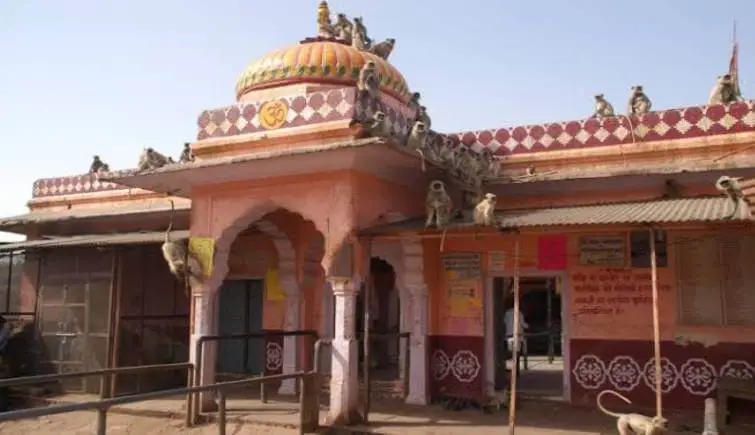
Deity of the Ranthambore Ganesha Temple
The deity in the Ranthambore Ganesha Temple is Bhagwan Ganesh, his wife (Riddhi Siddhi), his sons (Shub Labh), and his vehicle, Mushak.
Ganesha is one of the major Hindu Gods. He is the primary God in Jainism and Buddhism and is also called Vighanharta (which means remover of the obstacles). It is believed that one who worships him with pure devotion gets his entire problem solved.
There is a story about why Ganesha has an elephant’s face and a human’s body. He is the son of Bhagwan Shiva and Goddess Parvati.
One day Goddess Parvati created a boy out of her body and asked him to guard the bathing area so that no one could enter it while she was taking a bath.
That boy was Ganesha. He was determined to protect his mother’s privacy and followed her orders. When Bhagwan Shiv tried to enter the bathing premises, Ganesha immediately stopped him.
Bhagwan Shiva ordered him to move and give him the way, but Ganesha was adamant and didn’t move an inch. This angered Bhagwan Shiva so much that he beheaded Ganesha. After this, Goddess Parvati came to the scene and was devastated to see her son’s condition.
She was in grief and only demanded the life of his son. After this, Bhagwan Shiva ordered his people to bring the head of any living thing. His people went out on the search, and the first living thing they came across was an elephant; therefore, they brought the elephant’s head.
Then Bhagwan Ganesha was bestowed with another life but with an elephant’s head. Then all the Gods blessed Bhagwan Ganesha and said that in any festival or ritual, he would be worshipped first out of all the gods and goddesses. And this is the reason why he is worshipped first.
How to Reach the Trinetra Ganesha Temple
Ranthambore temple is a popular spot; therefore, this shrine is connected to roads, railways, and airways.
By airways – The Sanganer Airport in Jaipur is the closest airport to the Ranthambore Ganesha temple. But the nearest airport is still 180km away from the temple, and here, you need to hire a car or use bus services from the airport to the temple.
By Roadways – As the Ranthambore temple is famous, it is well connected to the networks of roads. In addition, several buses operated buses can drop tourists/people to the temple.
Several bus routes connect cities like Jaipur, Ahmadabad, Ajmer, and Delhi.
By Railways – The closest railway station to the temple is the Sawai Madhopur. It is around 10km away from the Ranthambore Ganesha temple. It is a crowded station, and from here, you can grab a taxi or any available transparent.
Time to Visit the Temple
The best time to visit the temple is from November to February. The reason is the number of devotees during this time of the year is high. So during a certain period of the year, millions of people visit this temple for 3-4 days.
On Wednesday, a special aarti in the Ranthambore Ganesha Temple is dedicated to Bhagwan Ganesha. Five aartis take place every day.
- Prabhat aarti – 06:00 am
- Sringar aarti – 09:00 am
- Bhog – 12:00 pm
- Sandhya aarti – 06:00 am (summer) and 05:45 am (winter)
- Shayan aarti – 08:00 pm
We hope you liked this article on Ranthambore Ganesha Temple. Please share this blog post with your friends and family on social sites.

